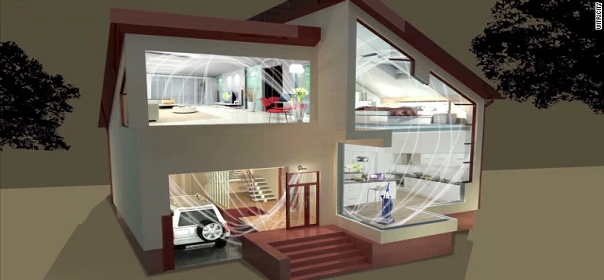Smart homes offer tools for people with disabilities to live more independently, allowing them to take control—turn on and off lights, find out who knocks on the door. An elderly woman who has trouble bending can use her smartphone to turn a floor fan on and off. A blind person could use a voice activated TV guide to change channels. And of course, for people with muscular dystrophy, pressing a button on their smartphone is easier than fumbling for tiny light switches.
overview of some of the best home automation technology for elderly or disabled people:
Lighting Controls and Modifications
The most obvious home automation technology to mention is lighting control. This is usually the starting point for any home automation system, and there is a very wide range of products and solutions out there which you can use to upgrade your home’s lighting system without spending a fortune. For people with impaired vision a simple solution which can be invaluable is to add a small light sensor and low energy LED lamp to your switches. This is then set to illuminate your switches when it starts to get dark, so that you can find and use them more easily.
Retrofit Automatic Door Opening Systems
For people who use a wheelchair, as well as others who have mobility problems, opening doors can be a hassle. Of course it is possible, but it is difficult – and unnecessarily so given that an automatic opening system can easily be fitted to any door which you have in your home.
Automatic Curtains and Blinds
Blinds and drapery can be slightly more expensive to control electronically than your lighting, but the added expense can be well worth it. A system which includes both lighting and drapery control also opens up the possibility to program “scenes,” which means you can have a single switch button or app icon to perform multiple functions—for example closing the blinds or curtains and switching on the lights with a single button, or even opening the curtains a switching on the TV together in the morning!
Wireless Socket Control
Everybody knows that leaving your appliances on standby adds money to your electricity bill. It is therefore best to turn things off at the wall at the end of the day to prevent waste and save money. But what if reaching down to the socket behind your TV is a difficult or impossible task? Wireless socket control is the answer.
Entry Control
Opening the door to visitors can be difficult for several different groups of people. Those with hearing impairments may not be able to hear a doorbell, while those with mobility challenges may find it difficult or painful to get to the front door to open it.
A networked door entry system and wireless lock combine to offer an excellent solution. A good quality home automation controller can be combined with a video intercom and wireless lock so that you get a phone alert when somebody rings your doorbell, and you can then speak to them via the intercom and let them in with a simple tap of the screen. For people with hearing impairments this means that they can get a tactile vibration alert from their phone when somebody comes to the door, and for those with mobility issues it also means that you can open the door without having to move anywhere.
Powered Cupboards
Many wheelchair users find reaching up to things difficult. Kitchen cupboards is a classic example. But simply moving everything down to a lower level introduces a new problem – how do you fit everything you need into the available space. Powered cupboards is an excellent solution for people who can reach their kitchen counter, but can’t reach up into cupboards located above it.
Monitoring and Alerts
For frail and elderly people, anybody prone to accidents, and a wide range of other groups, an electronic monitoring and alert system can be life-saving. There is such a wide variety of systems out there that it is difficult to go into any depth here, but the basic idea is for an electronic system to monitor the well-being of the house’s occupant and contact relatives or emergency services automatically if there is a problem.

